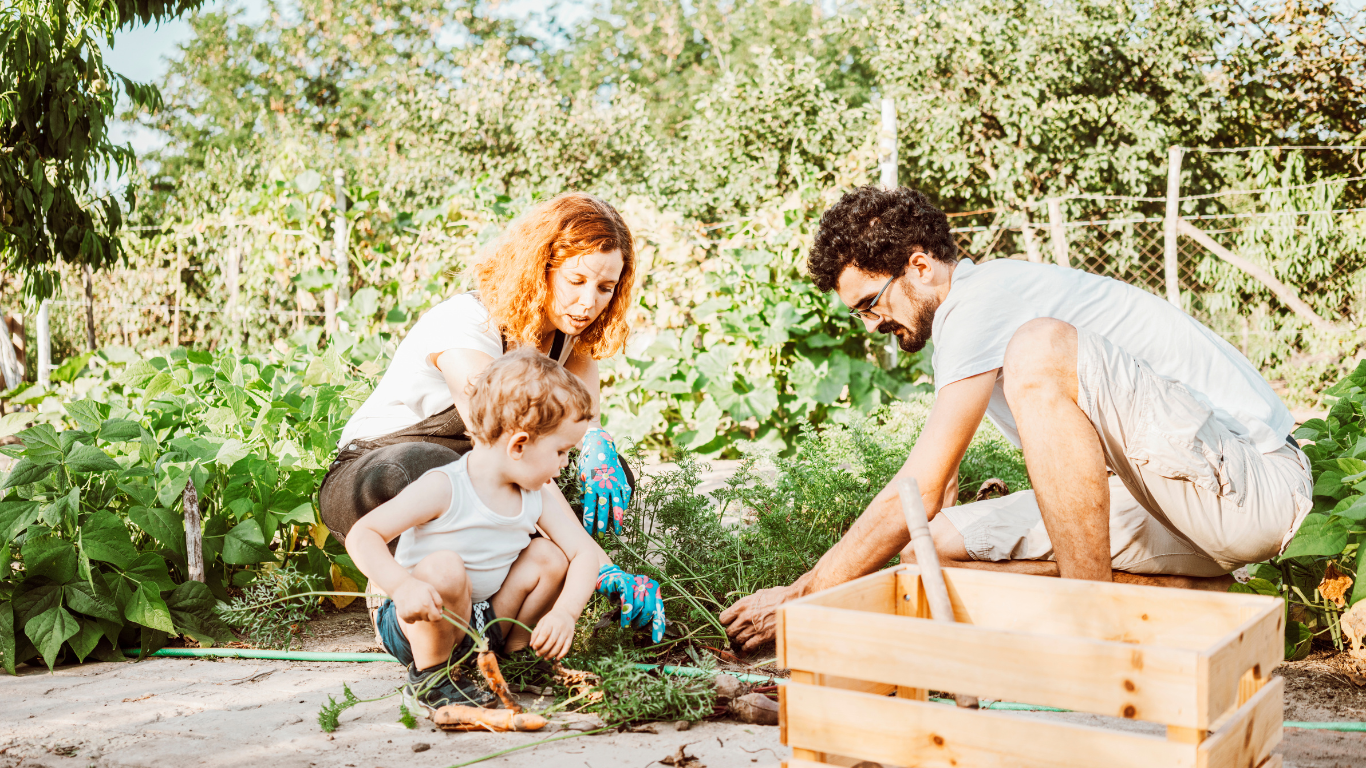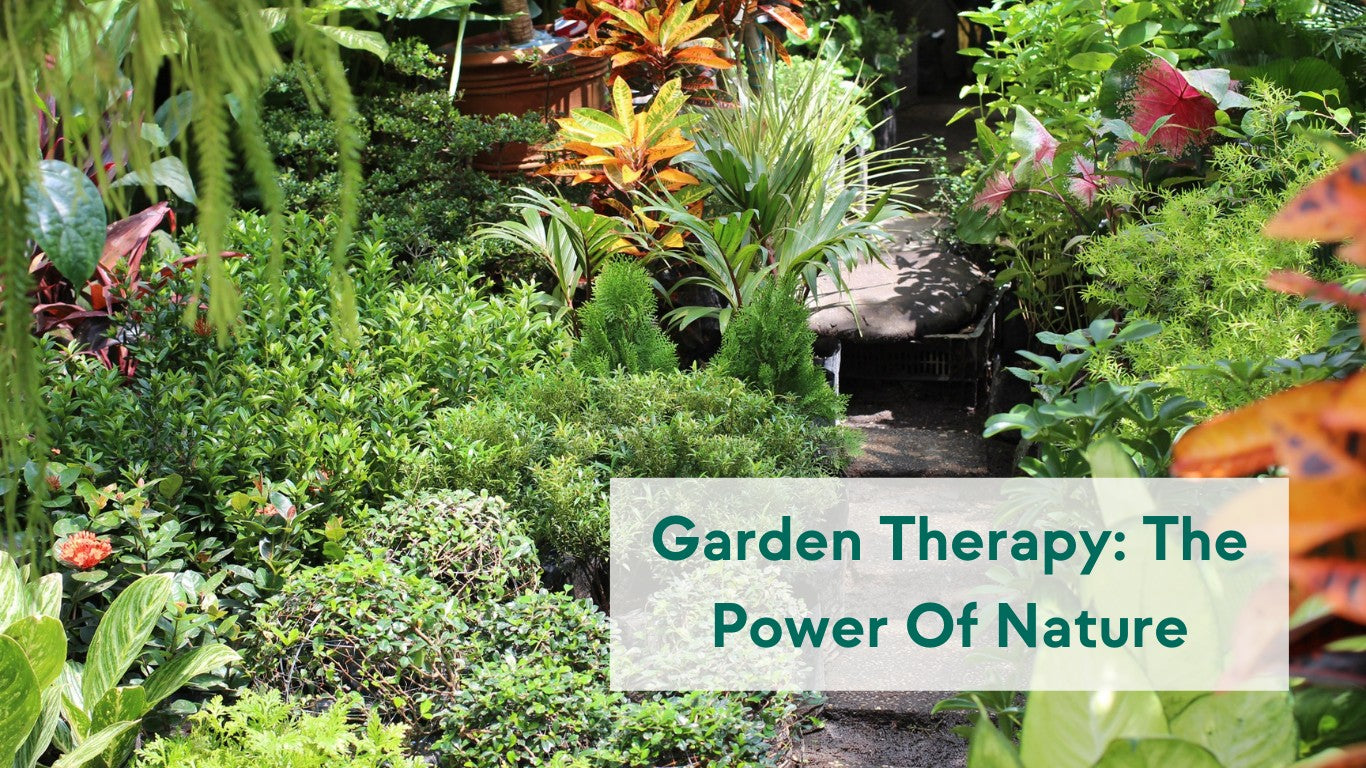
Therapy can come in many different forms, including professional horticultural therapy, also known as garden therapy.
When we hear the word “therapy”, we tend to think of it in the “psychotherapy” sense, where a trained professional consults with a patient to resolve problematic areas in the patient's life. Psychotherapy – or talk therapy – is thought to help our minds process and understand our feelings and emotions in a simpler way, and has been proven to have a strong correlation with an overall better quality of life. Over the last couple years, the topic of therapy has become quite normalized amongst the general public, and while nothing about these past few year has been normal, traditional talk therapy has definitely saw an increase in demand.
Still, traditional therapy is not the only type of therapy available to us. Therapy can be administered in many different forms, including professional horticultural therapy, also known as garden therapy. The great thing about this therapy is that it's relatively low cost and pretty much anyone can implement some element of garden therapy into their daily lives.
What is Garden Therapy?
Garden Therapy and Therapeutic Gardening are both terms indicating the purposeful use of plants and gardens to improve health and wellbeing.
The use of plants as a therapeutic tool to help and support our overall psychological health and happiness is grounded in the professional practice of horticultural therapy. The American Horticultural Therapy Association (AHTA) is responsible of defining the professional standards and training credentials for the practice.
Trained horticultural therapists work by setting specific treatment goals to improve the physical, mental or cognitive health for different groups of people, primarily those recovering from illness or injury, or living with long-term physical disability or mental health disorders.

A common patient-centered goal in Horticultural Therapy (HT) in a rehabilitation setting is to improve fine motor skills of the hands by scooping soil for potting up plants or by grasping flower stems to create a floral arrangement. These functional skills will transfer to other critical life care skills, such as dressing, feeding, and grooming to promote independence. Studies found that people suffering who lost some of their functional skills improve after participating in rehabilitation through HT.
What are the benefits of Nature on our wellbeing?
Biophilic design is a concept developed by Edward O. Wilson which states that humans naturally have a desire to be closer to nature.
People in places all around the world opt for having plants in their homes and offices and even travel to far away destinations just to be closer to nature. But why do we do this?
Studies have shown that when you engage with nature, you can lower your cortisol levels, which is one of the main hormones causing stress. Simply put, just being in nature or surrounding yourself with plants will help your bodies lower this stress hormone, and bring back a bit of calm to your life.

But there are many other ways nature can help boost our health and performance.
Why gardening makes us feel more connected and fulfilled
Gardening is a great hobby for people of all ages, and can help us distract ourselves from our everyday life routines and from a frenetic urban lifestyle.
Over the past few years, individuals across the globe began to reassess the importance of nature for mental and emotional health. The Covid-19 pandemic provided a unique opportunity in this sense: as our access to human contact was limited we began to look for significant connections elsewhere.
This search for more connection explains why interest in houseplants peaked during the pandemic. The most ancestral forces within our bodies and minds knew where that missing connection could have come from, because a long time ago that was our primary way of “being connected”: Nature.

The article “How COVID-19 Is Changing People’s Relationships With Houseplants”, brilliantly describes how we have even come to "ascribe emotional states to our plants” based on their condition.
For instance, happy plants being vibrant and healthy, while sad plants tend to have drooping, yellowing leaves. Through these attributions, we afford plants status as “individuals with distinct identities and personalities” and build relationships that are simultaneously "based on the ‘nature’ they bring and the “nurture” they exchange with their human companions.”
How can you practice Garden Therapy?
Horticultural therapy is used by trained professionals to help patients with a wide variety of issues, but you don't necessarily need a trained professional to help you reap some of the benefits of being more connected with Nature.
If you are a beginner when it comes to plants, and have no idea where to start, check out our article about indoor gardening for beginners where we share some helpful insight on where and how to begin your indoor gardening journey. If you already have a few thriving houseplants and are looking to do more, you can consider upgrading and develop your own indoor vertical garden.
Remember that plants come in all shapes and sizes, and have vastly different needs, so you are bound to find a set of plants that fit your space and area perfectly. Put succulents where you have the most sun, or brighten a gloomy corner in your home with a Snake Plant or another low-light option.

It’s important to create an environment where our minds and bodies can thrive and relax. With the proven therapeutic benefits of gardening and nature-inspired spaces, we should all start incorporating more greenery into our homes and daily lives.
A conclusive note
Growing plants indoor is certainly not an easy task, but with the right amount of knowledge and some basic tricks, it can become an amazing way to enjoy the endless gifts of nature right inside your home.
If you start growing a new garden, for garden therapy, the best thing you can do is research your specific plant types and take care of them specifically as they prefer. Different plants will have very different needs!
With a better understanding of plants in general and what’s important, your thumb is likely to become a bright green one, and your wellbeing will improve too!

Share:
Indoor Gardening Guide For Beginners
How Covid Changed Architecture and Design Forever